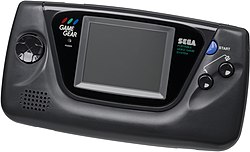Hardware releases

- Camerica releases Codemasters' Game Genie adapter in Canada and the UK (In the US, it was released by Galoob).
- NEC releases the TurboExpress handheld console.
- Nintendo releases the Super Famicom 16-bit console in Japan.
- SNK releases the Neo Geo Advanced Entertainment System (AES) home console.
- September 28 – Nintendo releases the Game Boy across Europe. It became a huge success and a wide phenomenon over the continent, particularly in Germany and the UK.
- October 6 – Sega's Game Gear color handheld is released in Japan. It is launched in North America in 1991 and Europe and Australia in 1992.
- November 30 – Sega's Mega Drive released in Europe.
- Amstrad halts production of the ZX Spectrum, ending that platform's 8-year dominance of the UK home computer market.
- Amstrad introduces its only console, the Amstrad GX4000, which fails to garner interest and is discontinued the following year.